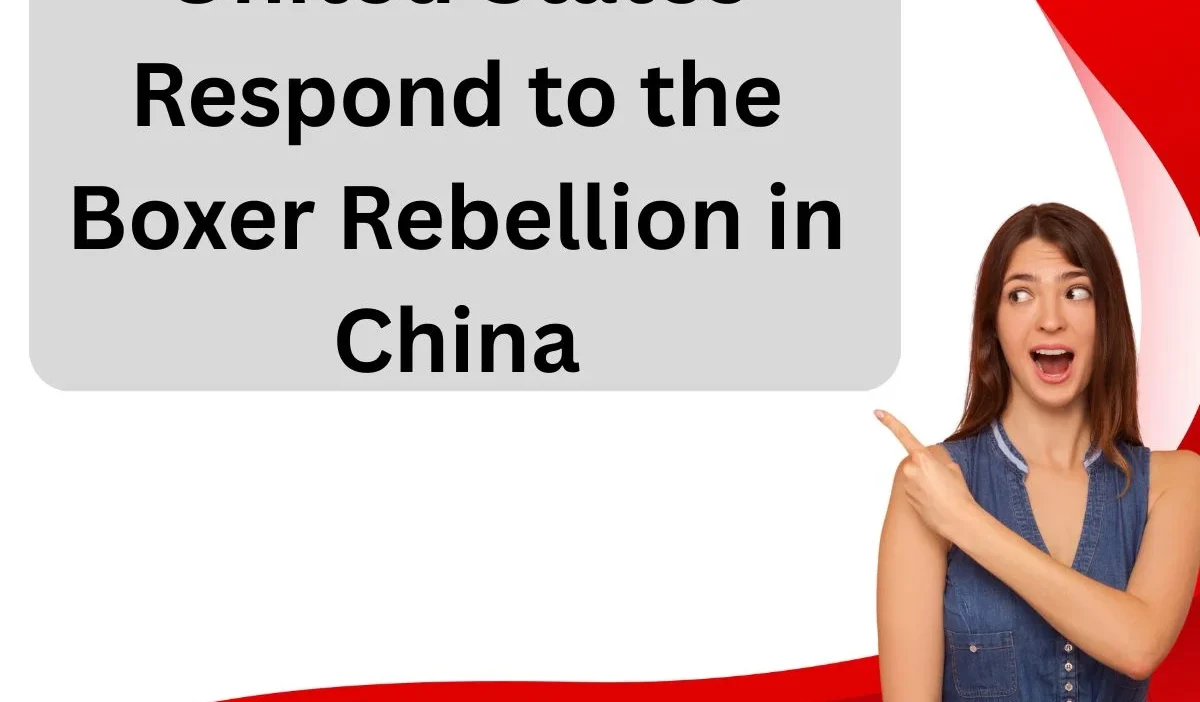The Boxer Rebellion was a turning point in Chinese and global history.
Between 1899 and 1901, a violent anti-foreign, anti-Christian uprising erupted in northern China, led by a secret society known as the “Righteous and Harmonious Fists” — or the “Boxers” by Westerners.
In response, several foreign powers, including the United States, intervened militarily.
But how exactly did the United States respond to the Boxer Rebellion? Was it purely military, or did diplomacy and policy shifts play a role?
This article unpacks the multi-faceted response of the U.S. to this international crisis.
Background: Understanding the Boxer Rebellion
To fully grasp America’s response, it’s essential to understand the context of the Boxer Rebellion itself:
- Roots of the Rebellion: The Boxers blamed foreign missionaries, traders, and influences for China’s declining fortunes. Their goal was to purge China of Western powers and Christianity.
- Chinese Imperial Support: Initially ambivalent, the Qing Dynasty later supported the Boxers as their uprising grew in strength.
- Targeted Violence: Boxers attacked foreigners, Chinese Christians, and diplomatic compounds, culminating in the siege of Beijing’s foreign legations.
U.S. Foreign Policy at the Turn of the Century
Before the Boxer Rebellion, the United States was already asserting its influence in Asia, primarily through the Open Door Policy — a doctrine championing equal trading rights in China for all foreign nations and preserving China’s territorial integrity.
The Boxer Rebellion threatened this policy and the safety of American nationals, prompting a swift and strategic U.S. response.
The United States’ Immediate Response
Military Involvement: The China Relief Expedition
- Troop Deployment: In June 1900, the U.S. dispatched around 2,500 troops as part of an eight-nation alliance to protect its citizens and interests in China. This became known as the China Relief Expedition.
- Key Battles: U.S. troops participated in several key operations, including:
- The Battle of Tientsin in July 1900
- The Relief of Peking (Beijing) in August 1900, which ended the siege of the foreign legation quarter
- The Battle of Tientsin in July 1900
- Naval Support: The U.S. Navy played a vital role by transporting troops and patrolling Chinese waters.
This was one of the first major foreign military engagements for the United States in Asia, demonstrating its growing interest in global affairs.
Diplomatic and Political Response
Commitment to the Open Door Policy
- The U.S. reaffirmed the Open Door Policy during the conflict.
- Secretary of State John Hay sent a second Open Door Note in 1900, urging other powers not to use the Boxer Rebellion as a pretext to seize more Chinese territory.
The Boxer Protocol (1901)
- After the rebellion was crushed, the U.S. signed the Boxer Protocol with other foreign powers and China.
- Key outcomes:
- China had to pay $333 million in reparations to the eight nations involved
- The U.S. was allotted $24.5 million
- Foreign troops were allowed to be stationed in Beijing
- Fortifications were dismantled
- China had to pay $333 million in reparations to the eight nations involved
The U.S. Gesture: Returning Excess Boxer Indemnity
Unlike some European powers, the United States made a notable diplomatic gesture in the aftermath:
- In 1907, President Theodore Roosevelt returned over $17 million (the surplus from the U.S. share of indemnity payments).
- These funds were used to educate Chinese students in the United States through the Boxer Indemnity Scholarship Program.
- This act helped to improve U.S.-China relations and showed America’s more benevolent global image.
Domestic Reactions and Impacts
Media Coverage and Public Opinion
- The American public, influenced by sensational news stories, generally supported intervention.
- The narrative was framed as rescuing innocent American citizens and missionaries under threat.
Military Lessons Learned
- The Boxer Rebellion provided valuable experience for the U.S. military in expeditionary warfare and coalition operations.
- It helped shape U.S. readiness for future conflicts, including in the Philippines and later World Wars.
Legacy of the U.S. Response
The United States’ response to the Boxer Rebellion had lasting impacts:
- Global Standing: It confirmed America’s emergence as a world power with military and diplomatic clout in Asia.
- China Relations: Though U.S. troops had helped suppress a Chinese uprising, the gesture of returning indemnity payments helped soften tensions.
- Open Door Policy: The U.S. stuck to its principle of avoiding colonization and advocated for fair access rather than conquest.
Conclusion
So, how did the United States respond to the Boxer Rebellion in China? Through a calculated mix of military intervention, diplomatic negotiation, and later, goodwill gestures.
While American troops fought alongside other imperial powers to protect their citizens and interests, the U.S. also worked diplomatically to limit territorial grabs by others and preserve Chinese sovereignty.
This dual approach — strong when necessary, but diplomatic when possible — became a hallmark of American foreign policy in the early 20th century.
The Boxer Rebellion marked a pivotal moment when the United States clearly stepped onto the world stage, balancing force with principle, and laying the groundwork for a century of Pacific involvement.

